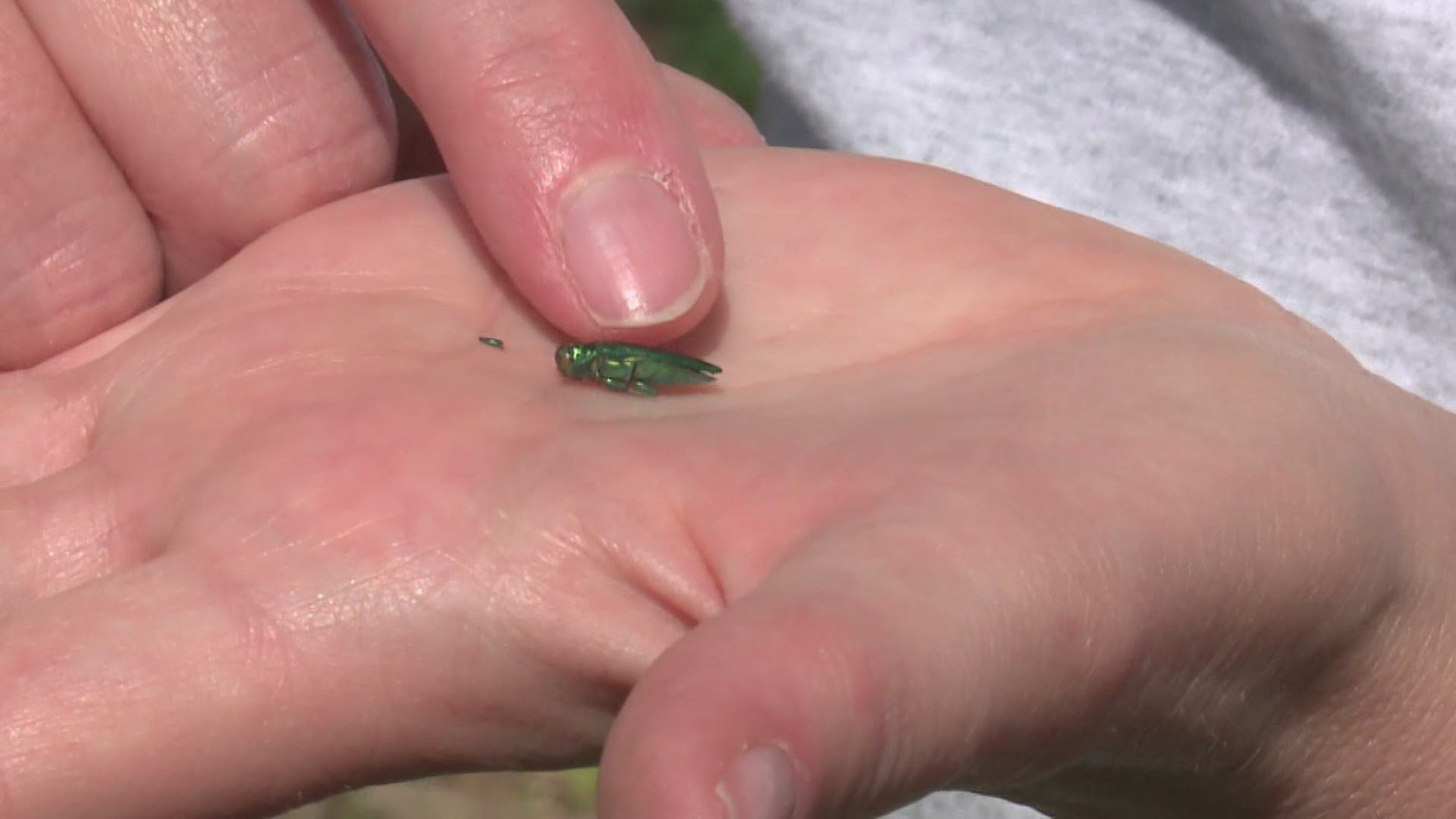FALMOUTH, Maine — An invasive insect is threatening some of Maine’s most beautiful trees, and the state Department of Agriculture, Conservation and Forestry is hoping landowners will get involved in the fight to stop it.
As the name implies, the green, invasive insect is considered a real threat to ash trees. Maine has three types: white ash, brown ash, and green ash, and all get used for multiple purposes. In city and town parks, along streets and even front yards, ash trees often are used for Shade and ornamentation. They also have commercial value for flooring and furniture and are used to make tool handles and baseball bats.
For Maine’s Native American tribe, brown ash is a vital part of the culture, as it is the wood used to make baskets.
The emerald ash borer is threatening all that, said Colleen Teerline, forest entomologist with the DACH. She said the insect has been moving steadily across the eastern half of the U.S. for several years and was first spotted in Maine in 2018.
Now she said the insects are found in trees in several areas of York County, along with Cumberland, Oxford, and Aroostook counties.
“It's a huge threat,” said Teerling, as she stood in a grove of ash trees at Maine Audubon’s center in Falmouth.
She has stripped about a foot-high strip of bark from an ash tree there, to create what she calls a “trap tree,” to lure in ash borers if they are in the area.
“Because this is relatively close to Portland, where we know there is emerald ash borer, we want to know when it spreads out here,” Teerling said.
She noted that removing the bark, or “girdling” the tree, puts the tree under stress, causing it to emit substances into the air that the Emerald Ash Borer can sense and draw to the damaged tree. There the borer lays eggs on the bark and the larvae then tunnel through the bark to the wood of the tree underneath. She said the tiny lines of borer track can eventually cut off water flow in the tree and kill it.
The insects are very hard to spot, she said, and often the only clues are thinning leaves or holes from woodpeckers in the bark.
“Unfortunately there’s not a lot that can be done,” she said. “If you have a few trees in your yard or around the house you want to save, there are pesticides that can be used.”
Larger stands of ash are more difficult. However, Teerline said there are natural predators, other types of insects that will consume the emerald ash borers and prevent the spread to other trees. Once an infestation begins, she said those predator insects can be released without harm to other species.
For that reason, Teeline and DACF are outing out the word to landowners to know their trees, and get involved with the department in monitoring them, as a way to help slow or stop the ash borer.
Asked if Maine’s woods are at risk, she had a quick reply.
“Yes, definitely, and certainly if we do nothing we are at risk of losing a lot.”

